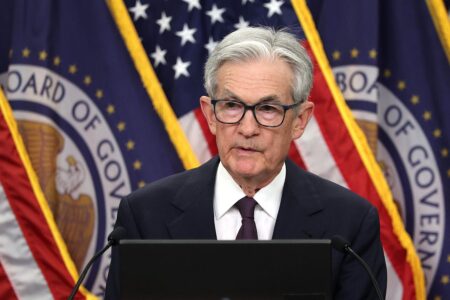Your team wants direction, and they want it from you. Bad meetings kill momentum and cost your reputation. Nothing drains energy faster than a leader who rambles without clarity. Your people watch you fumble, mentally check out, and wonder if you’re actually capable of doing your job.
What if every meeting you ran left people energized and aligned instead of confused and drained? This is possible for you.
These prompts transform how you show up as a leader. They inspire sharp thinking, creating meetings that build excitement and trust instead of breaking it. Copy, paste and edit the square brackets in ChatGPT, and keep the same chat window open so the context carries through.
Transform team meetings with ChatGPT: no wasted time
Master your presence before you speak
Your energy sets the tone before you say a word. Team members read your body language, notice your mood, and mirror what they see. Walking in stressed or distracted guarantees a tense meeting. Most leaders rush from task to task without resetting their state. This costs them influence and wastes everyone’s time. Take control of your presence to create meetings where people lean in instead of checking out.
“Help me prepare my mindset and physical presence for an important team meeting in [time until meeting]. Create a pre-meeting routine that includes: 1) A 2-minute mental reset exercise to clear distractions and center my focus, 2) Three specific body language adjustments that signal confidence and openness, 3) A brief visualization of the meeting going exceptionally well, including how I want team members to feel afterward. Also suggest one physical warm-up (like power posing or breathing) that will help me project calm authority. Make it practical enough to do in my office right before the meeting.”
Open with purpose and vision
Weak openings guarantee weak meetings. Many founders dive straight into updates without reconnecting people to the mission. Create an opener that reignites why their work matters. Link today’s discussion to your company’s purpose. Acknowledge recent wins to build momentum. Frame challenges as opportunities to improve. Paint a clear picture of where you’re going so everyone understands what success looks like.
“Write a 2-minute opener for my team meeting that will energize and focus everyone. Based on what you know about my business, include: 1) A reminder of our core mission and why it matters, 2) Recognition of a recent team win or milestone, 3) A brief acknowledgment of our biggest current challenge, 4) A clear statement of what we’re aiming to achieve in this specific meeting. Make the language direct and inspiring without being fluffy. Ask for more detail if required.”
Ask questions that show you care
Average leaders ask for status updates. Exceptional leaders ask questions that inspire deep thinking. Prepare questions that prove you understand each person’s role and challenges. Ask about obstacles you can remove. Find out where you can provide support without micromanaging. Focus on growth and learning over delivery and deadlines. The best questions make people think rather than just report.
“Based on what you know about my team from our previous conversations, suggest 5 specific questions I could ask in our next meeting that would demonstrate I’m supportive and engaged with their work. These questions should help team members feel valued while providing me with meaningful insights into their progress, challenges, and needs. For each question, include a brief explanation of why it’s effective and what it signals to the team. If you need more information about specific team members or projects, please ask.”
Check your leadership signals
Each word, pause, and reaction broadcasts messages about your leadership style. Too many founders focus only on what they say, completely missing how it lands. This creates trust gaps that slow everything down. Get an outside perspective on how your communication style impacts your team. Spot patterns in your approach that create confusion or anxiety. Stop broadcasting mixed signals.
“Based on my previous messages, analyze what my current leadership style likely signals to my team. Include: 1) Three strengths my communication style conveys, 2) Two potential misinterpretations team members might make based on my tone or messaging, 3) One blind spot I might not be aware of. If you need specific examples of my communication style from previous conversations, please ask for them.”
End with clarity and energy
The last minute matters more than the first ninety. Too many meetings fizzle out with vague next steps and trailing conversations. People leave uncertain about what was decided and what they should do next. Energy drops at exactly the moment it should peak. Instead, recap key decisions so everyone aligns on the same page. Assign clear ownership for next steps with specific timeframes. End with something that makes people want to get started right away. Make the energy in the room peak just as the meeting ends.
“Create a powerful closing statement for my team meeting that will drive immediate action. Based on what you know about our current projects and goals, craft a 3-5 sentence conclusion that: 1) Reinforces our top priority, 2) Creates urgency without causing anxiety, 3) Ends with a memorable line that energizes the team to take their next steps. The tone should be confident, clear, and motivating. Ask for more detail if required.”
Lead meetings that inspire action and build winning teams
Show up as the leader your team deserves. No more winging it. Sort your body language and temperament and get crystal clear on priorities before opening your mouth. Start with purpose to reconnect everyone to the mission. Ask questions that show you understand. Check how your leadership style actually lands. End with clarity that drives people to act. Your team craves direction. Give them the clarity they need to win.
Access all my best ChatGPT content prompts.
Read the full article here











